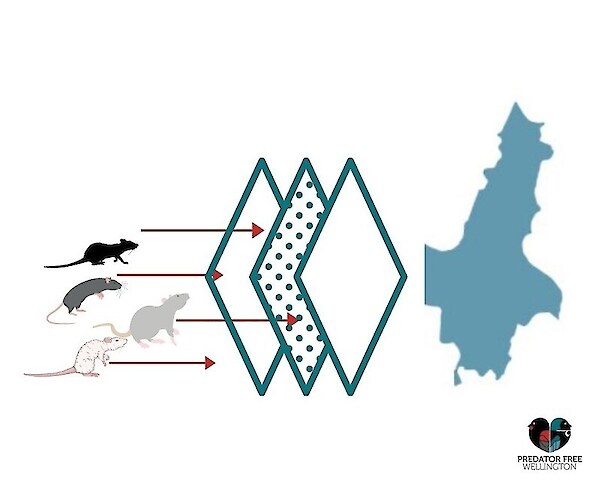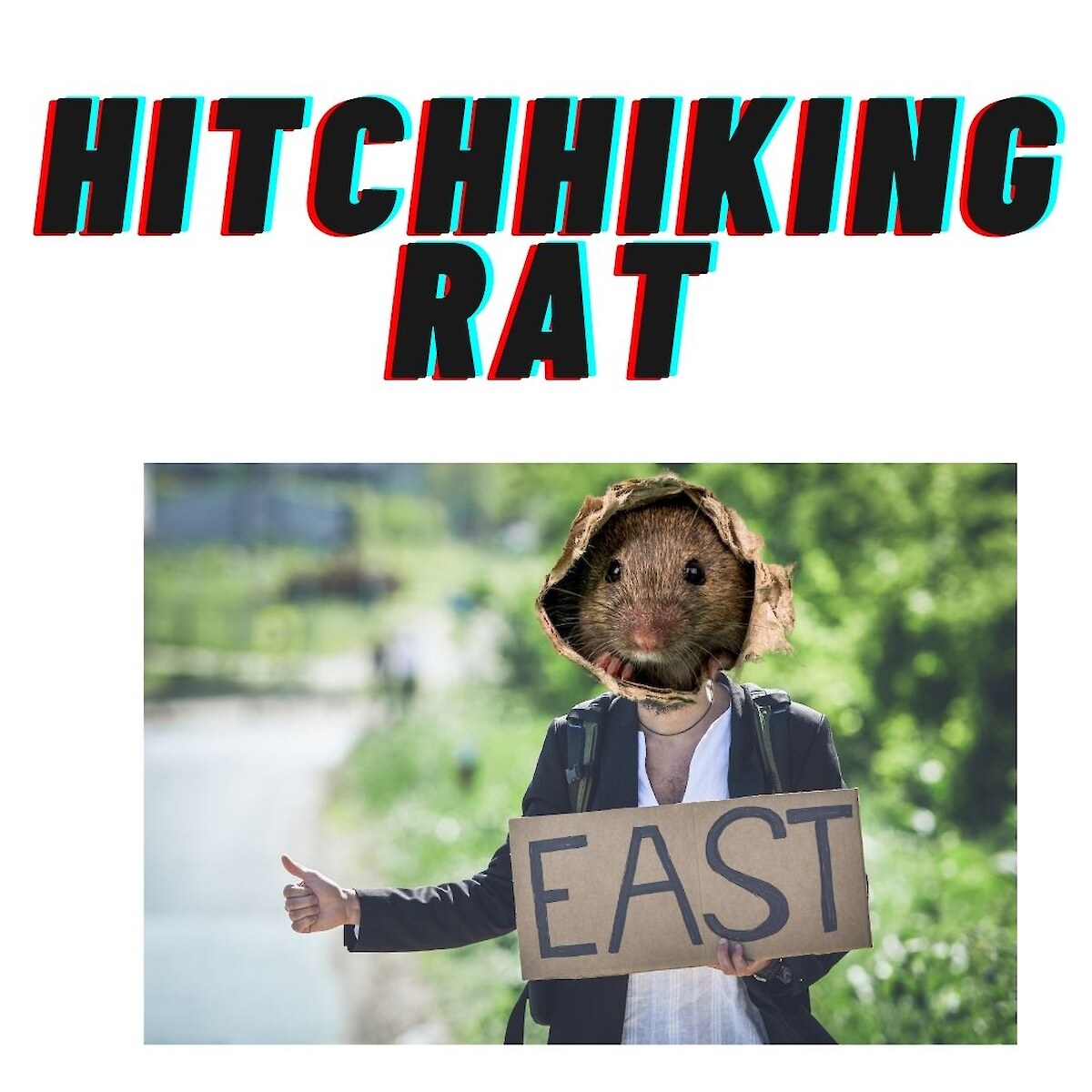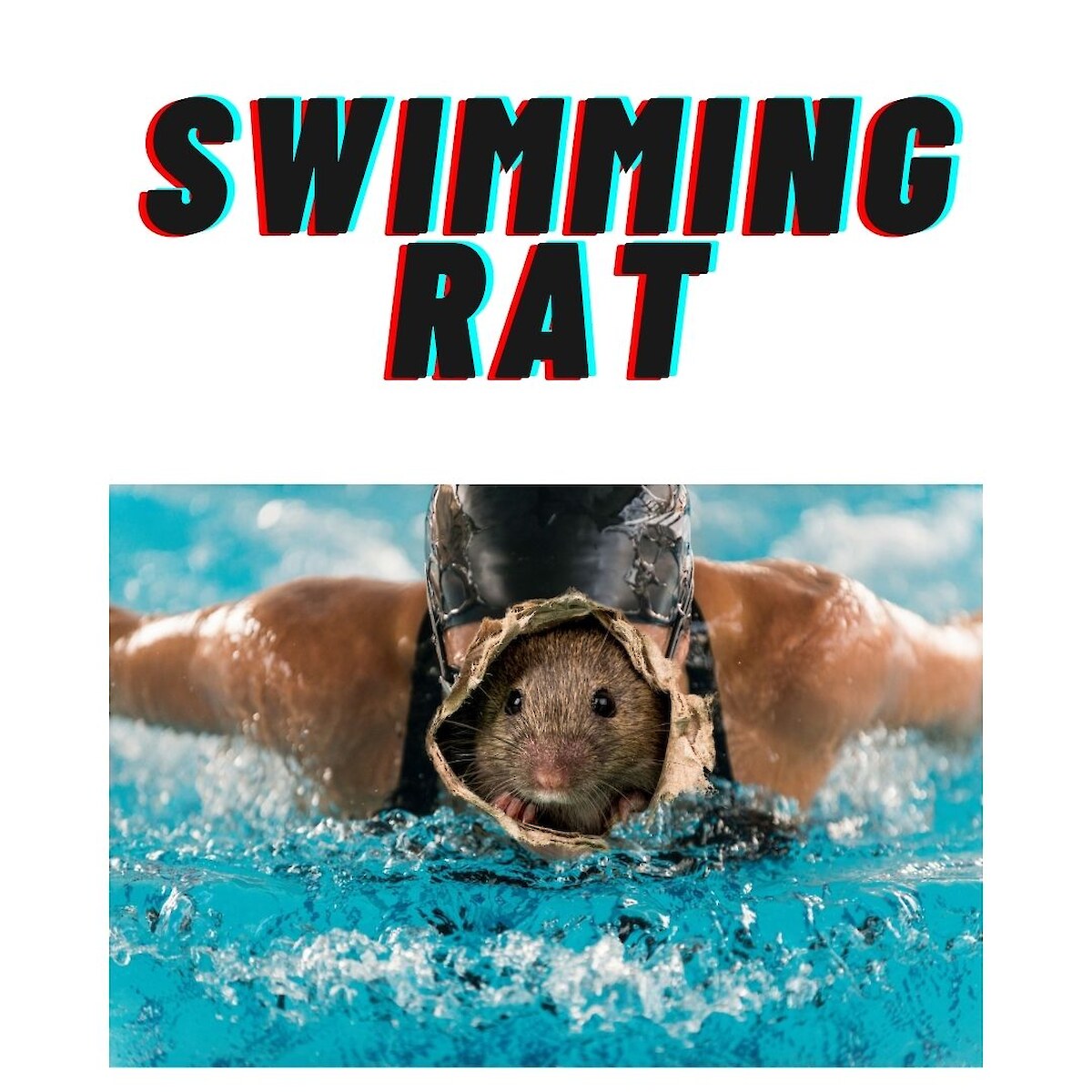Keeping rats, stoats, weasels and possums out has many layers
 Once we’re confident all these animals have been removed, an area moves into ‘biosecurity’. This isn’t one magic tool, person or organisation. No one is looking harder than us. We rely on:
Once we’re confident all these animals have been removed, an area moves into ‘biosecurity’. This isn’t one magic tool, person or organisation. No one is looking harder than us. We rely on:
- Public reports of sigthings
- Traps and bait stations
- Trail cameras, chew cards, wax tags
- Rat detection dogs
Each layer builds our defense network. As we make more of the city predator free, the biosecurity areas are further protected. When we find a rat or stoat in a biosecurity area, our capture team responds.
How can rats sneak back in the first place? Here are a couple of ways.

Hitchhiking rat
It’s possible a rat could hitch a ride in someone’s campervan, trailer or car. Even a second hand Trademe couch could be a great vehicle for a hitchhiking rat (true story!). If you’ve given a lift to a rat, deal with it as soon as you can (e.g. with a spade or reset your traps). Please also phone us on 0800 NO RATS and we can quickly respond with traps, bait stations and monitoring devices.

Swimming rat
Rats are incredible swimmers. We have a barrier of traps along the coastline to greet new arrivals. We also have volunteers who check these traps regularly.

Ninja rat
We have hundreds of traps across areas like the Rongotai isthmus to prevent rats getting into Miramar. Rats and stoats can roam over large areas and some individuals may be wary of traps and bait. This is where cameras and public reports can spot them. We respond immediately to sightings and remove individuals before they have a chance to breed.

Home detention rat
There is a small chance there are rats who have been hiding from us this whole time. Happily living in home detention, potentially under some cape ivy or in an all-you-can-eat compost buffet. This is where we need community vigilance. Let us know if you see any signs of rat activity and we will respond immediately.
Elimination is something we have to keep working at
Our systems are good. Our team and our volunteers are fantastic. As we move into new phases of the project it takes pressure off our biosecurity areas and makes our defences even stronger. It’s still not a magic bullet though. We need your vigilance to help us protect our hard fought gains. We’re in this for the long haul, and it’s up to all of us to play our part.
